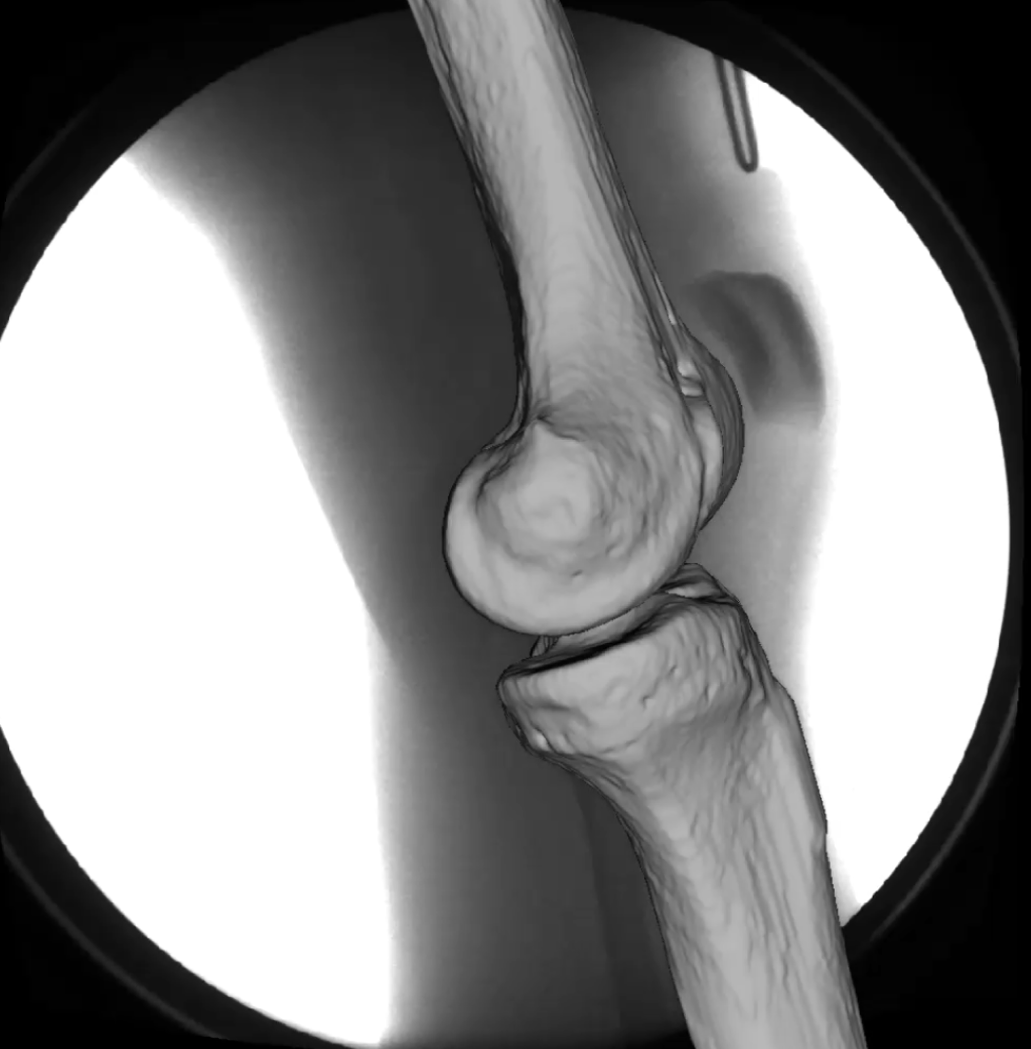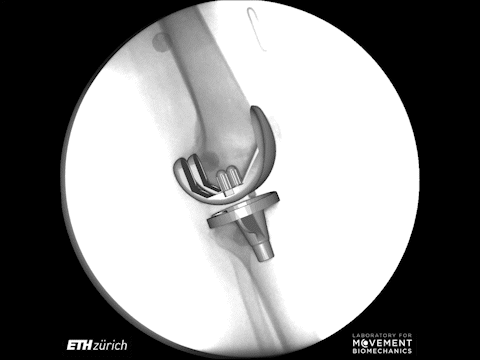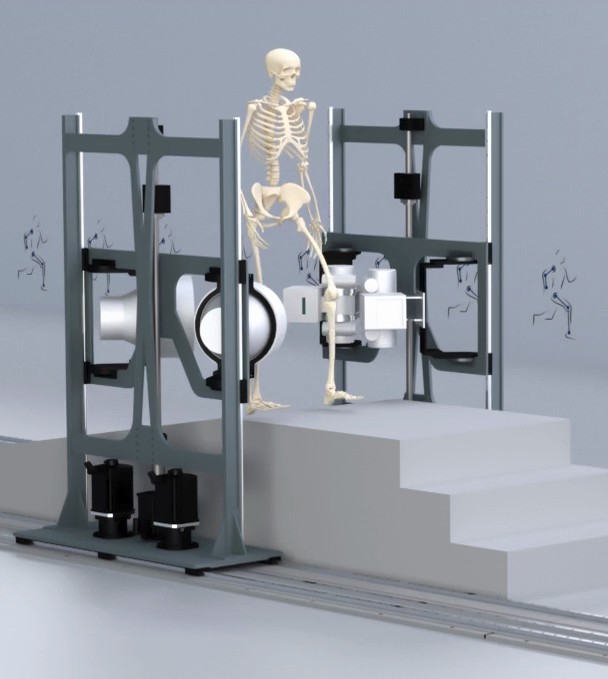Clinical Movement Biomechanics
Childpage navigation
Introduction
The goal of the Clinical Movement Biomechanics Group is to assess the skeletal kinematics and kinetics of individuals with musculoskeletal deficits in order to better understand the relationships between functional ability, joint movement and loading, overloading and pain. Key technologies include videofluoroscopy and synchronous motion analysis by means of skin markers, force plates and electromyography.
The automated moving fluoroscope has been developed at the Institute for Biomechanics of the ETH Zurich to allow tracking of the knee during level walking, downhill walking and stair descent. The previous developments were realized by Peter Schwilch and the former team members Hans Gerber, Marco Hitz, Mauro Foresti and Monika Schömann.
The ongoing developments of a tracking dual-plane fluoroscope are realized by Albert Planta, Stefan Plüss, Peter Schwilch, Florian Vogl and Pascal Schütz.
Projects
Functional Outcome of Total Knee Arthroplasties Based on Videofluoroscopy
The in vivo functionality of the variety of current design philosophies of total knee arthroplasties is assessed and evaluated in vivo during daily activities by means of videofluoroscopy and synchronous skin marker and ground reaction force measurements.


